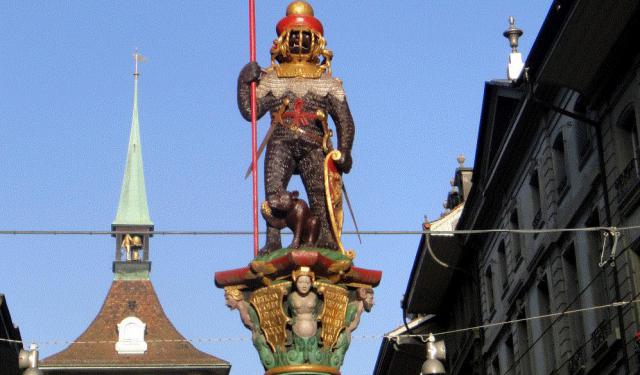
Swiss Sweets and Pastries
Among other things that make Switzerland popular around the world, chocolate is definitely the one. Still, chocolate isn't the only Swiss-made sweet deserving attention, as there are plenty of baked products, such as Magenbrot, Vermicelles, and Biberli, to mention but a few, that are well worth trying. For a better idea as to what the Swiss have to offer a sweet tooth, read on and find out.
(To visit the venues mentioned in this article, check out these Self-Guided Walking Tours in Bern)
Image Courtesy of: Albinfo
1. Bündner Nusstorte
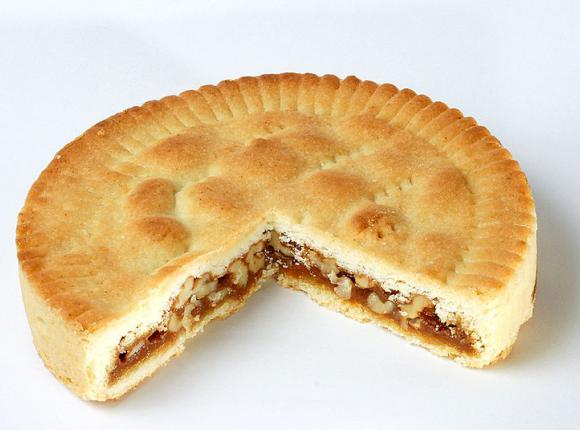
Image Courtesy of: Alexander Klink
Bündner Nusstorte, otherwise known as Engadiner Nusstorte, is a traditional Swiss short-crust pastry filled with caramelised sugar, cream and chopped nuts (usually walnuts) originated in the canton of Graubűnden where it is produced by small bakeries, each having their own version of the basic recipe. Although known since the 1920s, this nut tart became widely popular only in the 1960s. Remarkably enough, the nuts for its production have to be imported since no nut trees grow in the local climate. The combination of nuts, honey and sugar in this crumbly tart provides a lot of calories, so no matter how much you're starved, a slice of Bündner Nusstorte will bring you back to life in no time, especially if you enjoy it with a cup of coffee or tea.
2. Basler Läckerli

Image Courtesy of: Manuel Schneider(bla) (+/-)
Just as the name suggests, Basler Läckerli is originally from Basel where it was created some 600-700 years ago by the local spice merchants in order to sustain ecclesiastical members of the Basel Council. This hard and chewy glazed gingerbread is made with honey, candied fruit (peel) and nuts (hazelnuts, almonds), as well as a splash of cherry brandy (Kirsch). While still hot, the flat baked dough is cut into rectangular pieces, and then covered in sugar glaze. Although available all year round, traditionally it is eaten mostly at Christmas. Closely related to the German Lebkuchen, the Läckerli (aka Leckerli or Läggerli) of Basel translates from German as "delicious," and quite rightly so. Beware of the potential dangers it may pose to your teeth though, especially if you have an artificial dental crown or a wobbly tooth, as you won't be the first to seek dentist after giving in to your Basler Läckerli cravings.
3. Biberli
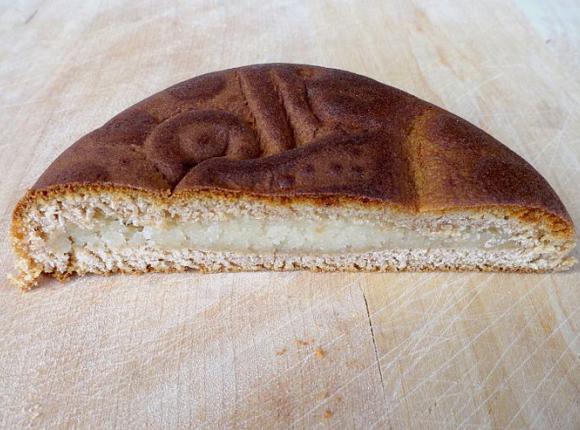
Image Courtesy of: Adrian Michael
The Swiss version of gingerbread, Biberli is a much popular snack, especially for those out on a hike and in need of a quick “recharge of batteries.” The history of Biberli starts as far back as the 14th century. Reportedly, the word “Biber(li)” stems from the German “Pfeffer” [pepper] and reflects the spiciness of the snack which comprises two slices of sweet gingerbread with a layer of sticky honey paste with nuts (mostly almonds) between them.
4. Magenbrot

Image Courtesy of: Markus Hagenlocher
Magenbrot, aka Alpenkräuter-Brot [Alpine herbs bread], is a small, dark brown, square shaped, sweet glazed biscuit resembling a gingerbread. It may be somewhat awkward in appearance, but renowned for its digestion improving qualities, although some say this is not entirely a healthy snack. Apart from cacao, this cookie contains different stomach-friendly spices, such as star anise, cinnamon, cloves, and nutmeg - hence the name Magenbrot [stomach bread] - as well as candied orange/lemon peel and hazelnut, for flavoring. It usually takes two days to make; the dough is prepared beforehand and left overnight to settle. After that, it is cut into small pieces and baked.
5. Kägi Fret

Image Courtesy of: Bodo
The well-known Kägi (or Kägi fret) is a chocolate-covered waffles that the Swiss find an ideal snack to enjoy whilst out on a hike or a bike. Its name partially pays tribute to Otto Kägi, inventor of this sweet, and the shortened version of the French word "gaufrette" [wafer]. Produced to a traditional recipe since 1958, Kägi fret comes in a variety of flavours, such as orange, coconut and even Japanese matcha, and represents a combination of crispy wafers with a creamy filling and homemade Swiss milk chocolate.
6. Birewegge
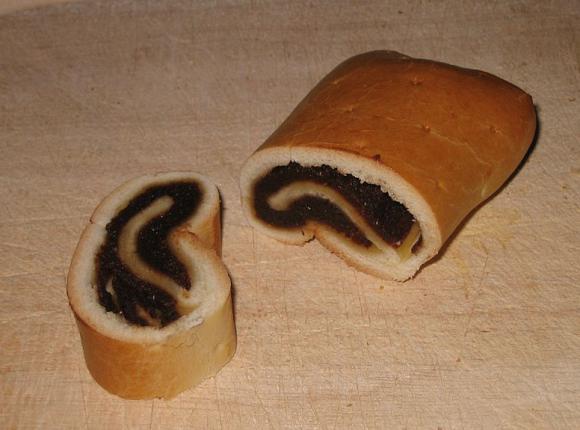
Image Courtesy of: Adrian Michael
Birewegge [pear bun], also known as Birnbrot [pear bread], is a traditional Swiss puff pastry roll stuffed with a mixture of dried pear, concentrated pear juice, nuts and loads of sugar. Oftentimes, the filling also carries raisins, walnuts and other dried fruit, such as apples or figs, and is flavored with coriander, cinnamon, star anise, anise, clove, and sometimes pear brandy or rose water. There are some regional specifications to Birnbrot and Birnwegge recipes, notably "Bündener Birnbrot" (Graubünden canton), "Glarner Birnbrot" (Glarus canton), "Toggenburger Birnbrot" (Toggenburg) and "Luzerner Birnweggen" (Luzern).
7. Spitzbuebe
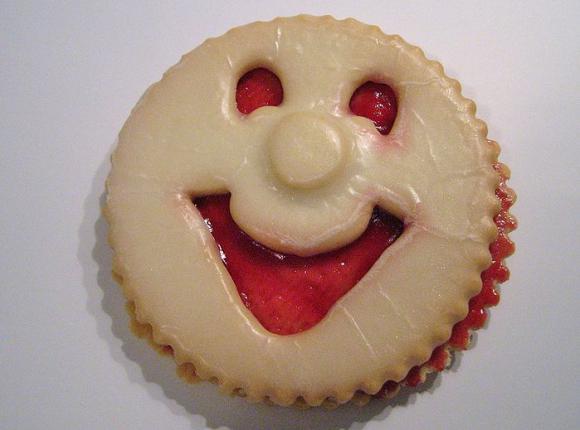
Image Courtesy of: Adrian Michael
The name Spitzbueb means a “cheeky boy” or a “little rascal.” This pastry comprises two delicate round shortbread cookies glued together with a layer of fruit jam. The upper part, traditionally, has some holes in it to resemble a grinning boy’s face. There are some simpler variations of the Spitzbueb that don’t have such holes. Certain cookies, called Linzer, are similar to Spitzbueb in appearance, but have a nut flavoring or are made with nuts.
8. Vermicelles
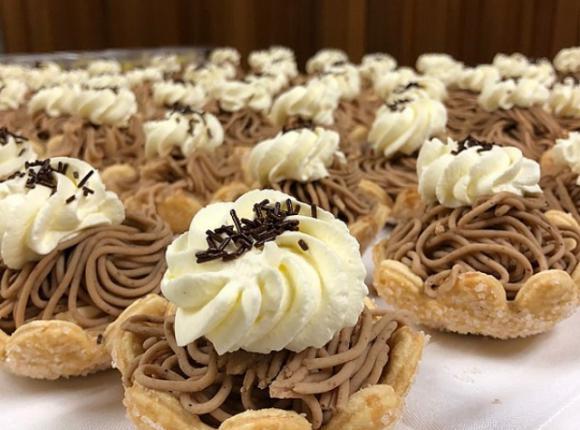
Image Courtesy of: Albinfo
Vermicelles is the southern Swiss dessert made of chestnuts, butter, sugar and often a shot of Kirsch (cherry brandy). Cooked chestnuts pureed with sugar, vanilla, milk or butter are pressed through a perforated plate to create circa 15cm long "worms". The latter perhaps gave the delicacy its name, as in Latin "vermiculi" means worms. The pile of worm-like brown spaghetti is served with meringue (a pastry made of egg white and sugar) and whipped cream, and is usually crowned with a candied cherry on top. Some people also like it with a scoop of vanilla ice cream, to contrast the chestnutty taste. Sometimes, you can find it served as a little (muffin-like) pie on a biscuit.
9. Cremeschnitte
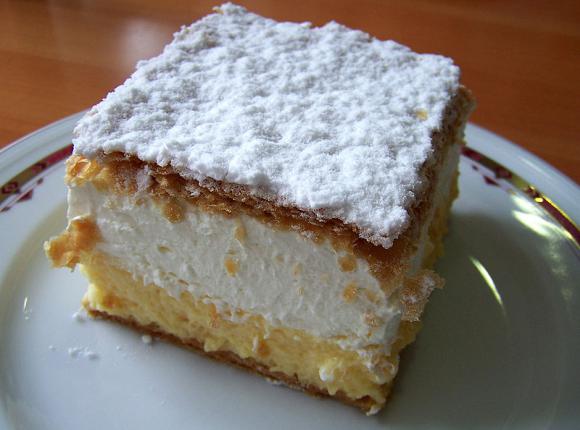
Image Courtesy of: UkPaolo
Seemingly innocent in appearance, yet extremely tempting, this chantilly and custard cream dessert is, in fact, one of the trickiest (if not say, messiest) to eat. The Cremeschnitte cake consists of puff pastry, vanilla custard and a sugar glaze. There may be some regional variations to it, but the key recipe always relies on a staple puff pastry base and custard cream.
10. Totenbeinli
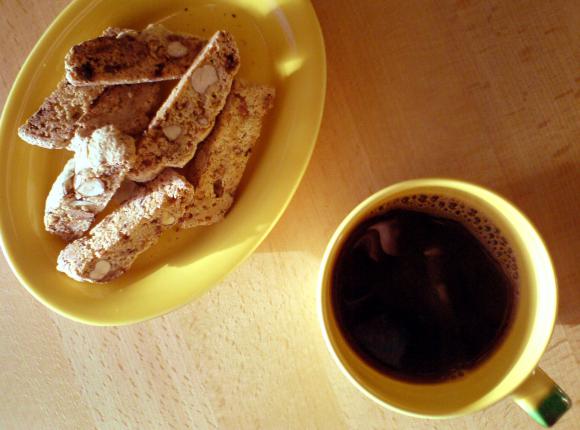
Image Courtesy of: cyclonebill
The name of this pastry sounds a bit weird, to say the least, as it means literally something like "little dead legs” or “legs of the dead”. The reason is that, back in the day, people used to have Totenbeinli after a funeral; hence the morbid name. Another reason, perhaps, is that unless you dip it in a cup of coffee, you run a pretty good risk of chipping your teeth on this rock-solid cookie. Its main ingredients are whole and ground hazelnuts, accompanied by lemon zest that gives it some sweet tang that lingers in your mouth afterwards.
11. Luxemburgerli
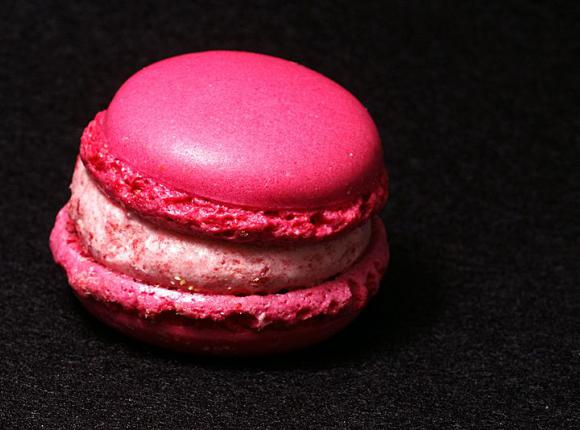
Image Courtesy of: Alexander Klink
Luxemburgerli, the Swiss mini-answer to the French macarons, just as the name suggests, trace its origin back to Luxembourg. There, more than half a century ago, the forefather of Luxemburgerli, Richard Sprüngli, discovered this scrumptious treat and had popularized it since, bringing to perfection the recipe that is now guarded heavily as a state secret. Filled with a light mousse made of fresh, natural ingredients, these airy, meringue-based mini-macarons come in a variety of flavors, such as Black Forest, Citron, Cinnamon, Champagne Gold, Bourbon Vanilla, Chocolate Mocha, Hazelnut, Deluxe, Raspberry, Caramel Fleur de Sel, and more. No artificial coloring or additives are used ever.
12. Tirggel
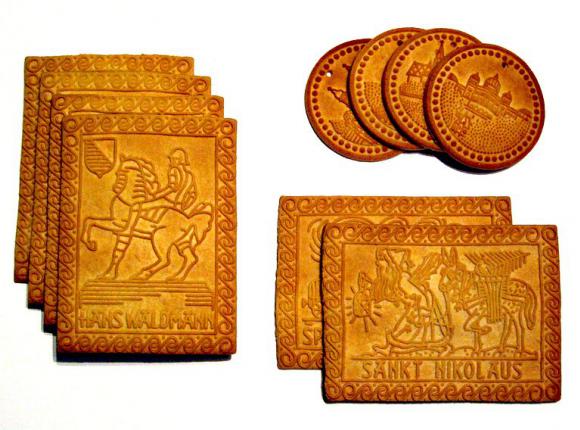
Image Courtesy of: Sandstein.
Another Swiss delicacy closely associated with Zurich is Tirggel. Initially, starting from the 13th century up until 1840, this elegantly thin, hard, lightly spiced and deliciously sweet biscuit was crafted solely in Zurich. Made of honey, ginger, aniseed, coriander, rosewater, and flour, it had been traditionally baked for Christmas, pressed into elaborately carved wooden moulds, later replaced by polycarbonate casts. On the surface, Tirggels always carry some historical motifs depicting scenes from Zurich's yesteryear life, Bible, etc.
Nowadays, Tirggels are produced all over Switzerland. This delicacy is meant to be savoured as a treasure from the old days, when the pace of life was much slower, by breaking off a small piece, placing it on the tongue, and allowing the delicate honey and spice flavor to unfold slowly.
Nowadays, Tirggels are produced all over Switzerland. This delicacy is meant to be savoured as a treasure from the old days, when the pace of life was much slower, by breaking off a small piece, placing it on the tongue, and allowing the delicate honey and spice flavor to unfold slowly.
13. Nussgipfel / Mandelgipfel
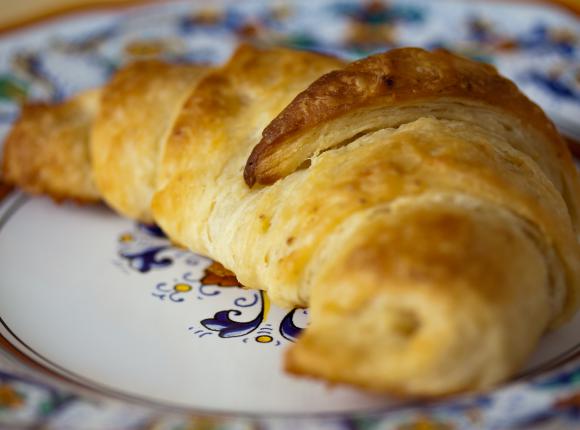
Image Courtesy of: Veganbaking.net
Mandelgipfel and Nussgipfel are croissant-like pastry rolls filled with a mixture of nuts, cinnamon, vanilla and various other ingredients. They’re almost like baklava, but instead of filo pastry, they use basic frozen puff pastry. The difference between Mandelgipfel and Nussgipfel is that the former contain almonds, while the latter are filled purely with nuts (usually, hazelnuts).
Other than these, there are many more, non-sweet varieties of "gipfel" [croissants] in Switzerland, including Buttergipfel [plain croissants], Vollkorngipfel [wholemeal croissants], Laugengipfel [pretzel croissants], Schinkengipfel [ham croissants], etc.
Other than these, there are many more, non-sweet varieties of "gipfel" [croissants] in Switzerland, including Buttergipfel [plain croissants], Vollkorngipfel [wholemeal croissants], Laugengipfel [pretzel croissants], Schinkengipfel [ham croissants], etc.
Get GPSmyCity App for IOS or Android
You can read offline thousands of travel articles like this one in the "GPSmyCity: Walks in 1K+ Cities" app on Apple App Store or Google Play Store. The apps also offer city offline maps and GPS navigation to guide you to the places featured in the articles.
Walking Tours in Bern, Switzerland
Create Your Own Walk in Bern
Creating your own self-guided walk in Bern is easy and fun. Choose the city attractions that you want to see and a walk route map will be created just for you. You can even set your hotel as the start point of the walk.
Fountains and Statues Walking Tour
With over 100 public fountains in the Old Town alone, Bern has a well-deserved reputation as the "City of Fountains". During medieval times, local life revolved around fountains as they provided water for residents and served as locations for news exchange and social gatherings.
Throughout history, Bernese residents have cherished their fountains and decorated them with elaborate... view more
Tour Duration: 1 Hour(s)
Travel Distance: 1.6 Km or 1 Miles
Throughout history, Bernese residents have cherished their fountains and decorated them with elaborate... view more
Tour Duration: 1 Hour(s)
Travel Distance: 1.6 Km or 1 Miles
Bern Introduction Walking Tour
The de facto capital of Switzerland, Bern is commonly referred to by the Swiss as the "federal city". Built around a crook in the Aare River, it traces its origins back to the 12th century. According to the local legend, Berchtold V, Duke of Zähringen, founder of Bern, vowed to name the city after the first animal he would kill on the hunt. That animal happened to be a bear, hence the... view more
Tour Duration: 2 Hour(s)
Travel Distance: 2.6 Km or 1.6 Miles
Tour Duration: 2 Hour(s)
Travel Distance: 2.6 Km or 1.6 Miles
Bern's Historical Churches
They say architecture should speak of its time and place, but yearn for timelessness. While the outside appearances of historical churches in Bern beckon seekers of beauty and tranquility, the ethereal atmosphere within embraces the visitor with a sense of timeless serenity.
Enveloped within Bern's historic old town, the Church of the Holy Ghost (Heiliggeistkirche) is one of the largest... view more
Tour Duration: 1 Hour(s)
Travel Distance: 1.9 Km or 1.2 Miles
Enveloped within Bern's historic old town, the Church of the Holy Ghost (Heiliggeistkirche) is one of the largest... view more
Tour Duration: 1 Hour(s)
Travel Distance: 1.9 Km or 1.2 Miles

